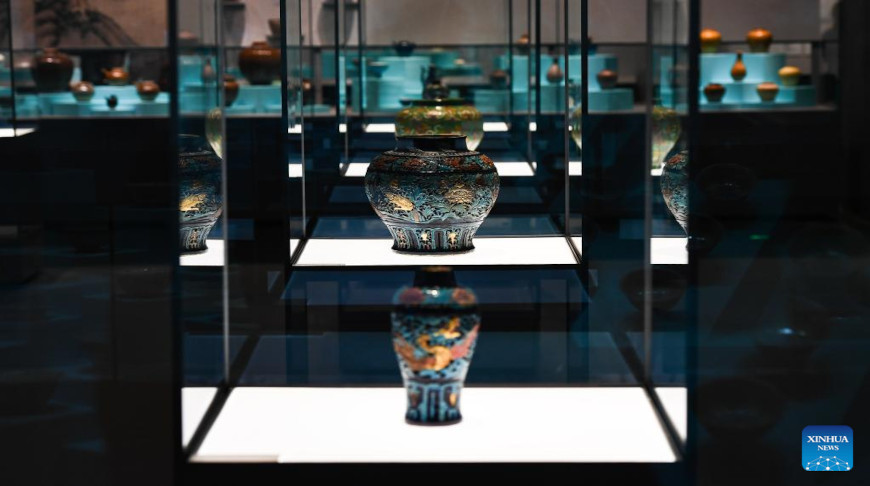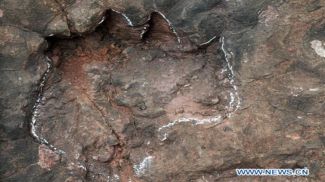
HAIKOU, 1 October (BelTA - Xinhua) - An exhibition featuring more than
400 relics retrieved from two ancient shipwrecks discovered in the South
China Sea kicked off in Qionghai, a city in the island province of
Hainan in southern China.
These artifacts, which had been submerged in the sea for over 500 years at a depth of more than 1,500 meters, are being showcased for the first time.
Located at the China (Hainan) Museum of the South China Sea, the exhibition covers an area of nearly 1,000 square meters. A total of 408 artifacts from the two ancient shipwrecks are on display, along with 34 borrowed artifacts from the Palace Museum and other museums, bringing the total number of exhibits to 442.
The most eye-catching exhibit is Fahua-colored porcelain, with 13 pieces (sets) on display. The archaeological discovery of Fahua-colored porcelain is very rare, and it is the first discovery in a shipwreck.
These archaeological discoveries prove that Jingdezhen colored porcelain was exported in the middle of the Ming Dynasty (1368-1644), providing facts for finding the kiln sites.
The exhibition also features one red and green bowl with the mark "made in the year of Bingyin." This confirms that the sunken ship belonged to the Zhengde period of the Ming Dynasty, which is of great value and contributes to the study of trade routes in the South China Sea.
Further investigation of the two shipwrecks will be conducted, so the exhibition will adopt a dynamic update mode and update the cultural relics on display according to the new archaeological findings.
The exhibition also sets up a special zone for the protection of cultural relics, presenting cultural preservation work via multimedia to allow the audience to understand its process and significance.
These two ancient shipwrecks from the Ming Dynasty were discovered near the northwest continental slope in the South China Sea in October 2022.
More than 900 pieces of cultural relics have been retrieved from the two ancient shipwrecks during three investigations from 2023 to 2024.
Xin Lixue, curator of the China (Hainan) Museum of the South China Sea, said this collection of high-grade cultural relics is substantial in size, diverse in variety, and well-preserved.
"Through this exhibition, we hope to show the social and economic development in the middle of the Ming Dynasty and inform the audience about the prosperity of the Maritime Silk Road in ancient China and the exchanges between Chinese and foreign civilizations," said Xin.
These artifacts, which had been submerged in the sea for over 500 years at a depth of more than 1,500 meters, are being showcased for the first time.
Located at the China (Hainan) Museum of the South China Sea, the exhibition covers an area of nearly 1,000 square meters. A total of 408 artifacts from the two ancient shipwrecks are on display, along with 34 borrowed artifacts from the Palace Museum and other museums, bringing the total number of exhibits to 442.
The most eye-catching exhibit is Fahua-colored porcelain, with 13 pieces (sets) on display. The archaeological discovery of Fahua-colored porcelain is very rare, and it is the first discovery in a shipwreck.
These archaeological discoveries prove that Jingdezhen colored porcelain was exported in the middle of the Ming Dynasty (1368-1644), providing facts for finding the kiln sites.
The exhibition also features one red and green bowl with the mark "made in the year of Bingyin." This confirms that the sunken ship belonged to the Zhengde period of the Ming Dynasty, which is of great value and contributes to the study of trade routes in the South China Sea.
Further investigation of the two shipwrecks will be conducted, so the exhibition will adopt a dynamic update mode and update the cultural relics on display according to the new archaeological findings.
The exhibition also sets up a special zone for the protection of cultural relics, presenting cultural preservation work via multimedia to allow the audience to understand its process and significance.
These two ancient shipwrecks from the Ming Dynasty were discovered near the northwest continental slope in the South China Sea in October 2022.
More than 900 pieces of cultural relics have been retrieved from the two ancient shipwrecks during three investigations from 2023 to 2024.
Xin Lixue, curator of the China (Hainan) Museum of the South China Sea, said this collection of high-grade cultural relics is substantial in size, diverse in variety, and well-preserved.
"Through this exhibition, we hope to show the social and economic development in the middle of the Ming Dynasty and inform the audience about the prosperity of the Maritime Silk Road in ancient China and the exchanges between Chinese and foreign civilizations," said Xin.













